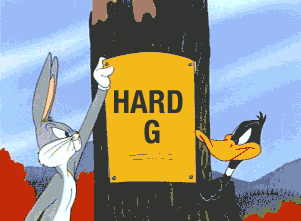(Warning: This post contains a lot of gifs. I’d apologize, but I’m not sorry at all.)

Probably longer ago than you would expect, and in neither a foreign nor faraway land, the gif was born. Welcomed in 1987 by the first major U.S. online commercial service, Compuserve, the first gif (reportedly of an airplane) was swaddled and cooed over initially but admittedly did not peak socially until its mid-20s.
Before we get too far ahead of ourselves, let’s take a step back and bring those head-scratchers asking “What is a gif?” up to speed.

What Is a Gif?

“GIF” refers to a file format, short for “graphics interchange format.” Notable features were that it allowed for transfer of a 256-color spectrum, an impressive departure from the black-and-white transfers of the time, as well as a compressed format that would load easily on even the slowest of modems. (Hah, modems.)

Early users likened gifs to flipbooks or early animation: it was a digestible piece of media that packed more punch than the static photo but didn’t gobble up the bandwidth of a video. (Nor were videos adequately supported on webpages or other digital outlets until relatively recently. On early webpages, a two minute YouTube embed would take 40 minutes to buffer.)

Does this give you anxiety? Me too.
Another feature that endeared the gif to viewers was its ability to specify an infinite loop. On such an abbreviated timeline, watching a curated snippet of media over and over again makes it highly accessible and engaging. Not to mention hypnotizing…

The Social Rise of the Gif
Although a gif in today’s digital landscape has been outpaced and deemed limiting as compared with other, richer modern file formats, it has held its own as a medium of communication.
Not despite but, I would argue, because of its limitations, consumers are able to readily take ownership of gifs, reappropriate in exchanges of all sorts of dialogue due to its portability/flexibility (via text, email, social media channels), reinterpret/remix, and thereby claim multimedia culture in personal ways.
For all these reasons, coupled with its compressed format and ability to delight, the gif has taken off in recent years. Where gifs previously could only live on webpages under construction or glittering on MySpace, they took Tumblr and Reddit by storm circa 2006-2008, the only sites that supported and enabled sharing of gifs from the get-go, as both are visually driven and heavily rely on reblogging to disburse content.

As Tumblr and Reddit rocketed up in popularity along with the gifs contained therein, other social media channels jumped in years since to capitalize on this trend and exponentially realize greater viral capacity.
Facebook has recently followed suit, allowing gifs to loop and upload easily. Twitter still holds out, uploading gifs technically as videos, requiring a ‘push-play’ feature to view. Vine, Instagram, and Snapchat are other highly visual apps that keep gifs alive. Apple rolled out a software update in 2015 to enable inclusion of gifs in text message conversations, too.
Long live the gif.

How to Use Gifs in Your Content Marketing
Gifs are molded by the creator and are stripped of ego. They’re fun, to the point, and not fussy.

Pay attention to your audience. How do they interact with your social media posts? Are they using reaction gifs or emojis? Memes? Pictures? If yes, chances are — they’d love to see a gif in your content.
Gifs are like a jumbo tub of popcorn at the movies. Even those who don’t think to order the tub at the movies (or fully grasp what gifs are or seek them out) wouldn’t turn down the freshly popped buttery goodness when presented with it.

If you’re not sure if your audience is into gifs, don’t be afraid to experiment. Throw one into a blog post and gauge the reactions. Have fun with it. Your audience can tell when you’re enjoying yourself.
You may have some questions about using gifs and proper attribution. Wonder no longer.
Says Bobby Finger, an editor for the ‘gif’ tag on Tumblr:
Unless watermarked, GIFs are incredibly hard to source. If I happen to know the source offhand, I’ll definitely cite it. If I don’t know the source, I don’t. Attempts to find the creator are generally futile… I think part of the unspoken agreement you have when uploading a gif anywhere on the internet is that it’s no longer yours — it’s part of the great big community pool we all visit when wanting to express how we’re feeling in the way nature intended: on a loop.
Bottom line: if you know where the gif originally came from, link to the source below the gif. If you snag a gif from one of the major gif sourcing sites (like Giphy) that embed their own watermark, no need to attribute in addition.

If you need gif-spiration, check out these brands doing gifs right on Twitter.
Good Sites to Find Gifs
- Giphy
- Reaction Gifs
- Tumblr/Reddit/Imgur
- Mr. Gif
- Make a Gif (make your own!)

…And the Question of Pronunciation

I say, do what you want. It’s the gif way.



